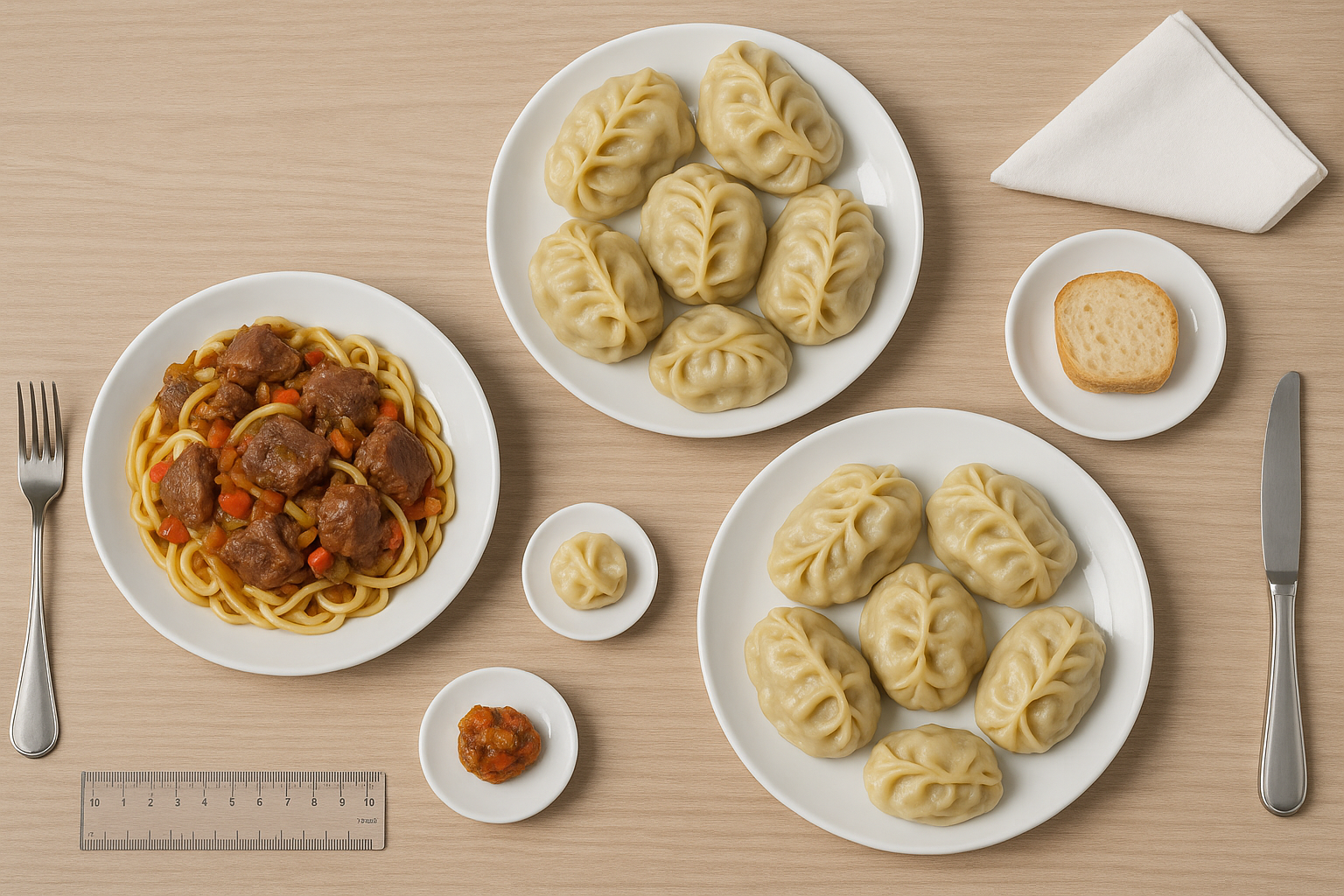From pilaf to dairy: Digital atlas captures Central Asia’s culinary diversity for health research
Central Asia’s diet is characterized by a heavy reliance on red meat, bread, and dairy, staples that are often missing or misrepresented in international dietary tools. The study highlights that this absence has hindered regional efforts to assess nutrient intake accurately and design effective interventions for noncommunicable diseases such as heart disease, diabetes, and obesity.

A team of researchers has developed the first digital food atlas dedicated to Central Asia, a tool designed to revolutionize dietary assessment and nutritional research across the region. The study, titled "Digital Mapping of Central Asian Foods: Towards a Standardized Visual Atlas for Nutritional Research," and published in Nutrients, introduces a standardized photographic resource that documents traditional and modern Central Asian foods in multiple portion sizes to enhance accuracy in dietary surveys and health monitoring.
The atlas responds to a critical gap in nutrition research: the absence of culturally specific visual databases that capture regional diets accurately. Until now, most food atlases were built for Western or East Asian contexts, leaving Central Asia, with its unique culinary traditions and high prevalence of diet-related diseases, without a reliable reference for portion estimation or caloric analysis.
Filling a critical gap in nutrition research
The research team, based at Nazarbayev University in Kazakhstan, designed a standardized photographic protocol to document commonly consumed Central Asian foods and beverages. Their process began with identifying food items from two large dietary datasets that represented both rural and urban consumption patterns. From this pool, 115 items were selected, including 95 solid foods and 20 beverages.
Each item was photographed in three portion sizes, small, medium, and large, using a fixed setup that maintained consistent lighting, angles, and reference objects. The 60-degree camera angle, use of a ruler, and identical plate arrangements allowed for reliable comparison between portions and across food types. This meticulous standardization ensures that researchers, dietitians, and policymakers can use the atlas as a consistent visual guide for estimating portion sizes in dietary recalls and nutritional surveys.
Central Asia's diet is characterized by a heavy reliance on red meat, bread, and dairy, staples that are often missing or misrepresented in international dietary tools. The study highlights that this absence has hindered regional efforts to assess nutrient intake accurately and design effective interventions for noncommunicable diseases such as heart disease, diabetes, and obesity.
By digitally mapping the region's foods, the authors aim to harmonize data collection and improve global comparability in nutritional research. The digital atlas also provides a foundation for future integration into mobile health platforms and AI-assisted dietary tracking systems.
Building a standardized digital atlas for central Asia
The development process went far beyond simple food photography. The research followed a rigorous methodology to ensure the atlas met international standards for dietary assessment. Each image was annotated with precise weight measurements, energy values, and bilingual food names in English and local languages to enhance usability across borders and cultural contexts.
The researchers categorized the foods into nine broad groups: cereals and grains, meats, dairy, vegetables, fruits, fats and oils, beverages, mixed dishes, and condiments. Each category was selected based on prevalence in dietary intake studies conducted in Kazakhstan and neighboring countries. Traditional meals such as beshbarmak (boiled meat with noodles), plov (rice pilaf), and manty (steamed dumplings) feature prominently, alongside modern staples like yogurt, coffee, and bread products.
In addition to capturing cultural authenticity, the atlas was built for digital adaptability. The entire database is compatible with web and mobile formats, allowing for remote access by researchers, clinicians, and survey teams. The online format also facilitates real-time updates, enabling the inclusion of emerging food products or regional variations over time.
Importantly, the study focuses on standardization in food photography, including consistent scaling and lighting, is essential for ensuring objectivity in portion estimation. This approach eliminates the subjective discrepancies that have long plagued nutrition studies in multicultural contexts, where variations in dish composition and presentation can distort calorie and nutrient calculations.
Applications for public health, policy, and technology
The digital food atlas also holds practical significance for public health policy and technological innovation. Central Asia is witnessing rising rates of cardiovascular diseases and obesity linked to dietary habits rich in saturated fats and processed carbohydrates. The new atlas enables more precise tracking of dietary risk factors and nutrient deficiencies across populations, strengthening the evidence base for national nutrition strategies and food labeling regulations.
For clinicians and dietitians, the atlas provides a culturally relevant visual reference that can be used in patient consultations, particularly when language or literacy barriers limit verbal communication. Nutrition educators can integrate the tool into school programs to promote awareness of portion control and balanced diets among youth.
From a technological perspective, the atlas lays the groundwork for integrating AI-powered dietary assessment systems. By linking standardized images to machine learning algorithms, developers can train applications to automatically recognize and estimate food portions from photographs taken by users. This innovation could streamline dietary tracking for individuals managing chronic conditions or following personalized nutrition plans.
The research team envisions that, with future expansion, the atlas could connect to digital health platforms used across Central Asia, supporting regional collaborations on diet and disease prevention. Open access to the database would also facilitate cross-country comparisons, allowing nutrition scientists to align methodologies and contribute to global datasets on diet and health outcomes.
- FIRST PUBLISHED IN:
- Devdiscourse









